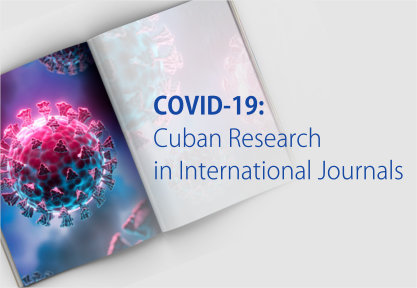April–July 2019, Vol 21, No 2–3

INTRODUCTION Population aging is a worldwide phenomenon. It is estimated that by 2050, one of five persons will be aged ≥60 years. In Chile, 15.8% of the population is now aged ≥60 years, and this figure will reach 30.7% by 2050. In 2006, a national program was implemented to provide assistive devices to older adults aged ≥65 years with limited mobility or difficulty performing activities of daily living. To date, there have been no assessments of the program’s effectiveness.
OBJECTIVE Assess the effectiveness of an assistive devices policy in Chile on improving functional capacity of older adults aged ≥65 years, and beneficiaries’ perceptions of the services received, including changes in their quality of life.
METHODS This was a before–after longitudinal study. A cohort of 309 persons was recruited, consisting of patients who received care at a public hospital in Santiago, Chile during 2014–2015. They were assessed before delivery of assistive devices, then followed for seven months, with repeated evaluations made in their homes. The following indicators were measured: functional capacity (Tinetti scale and Barthel Index); changes in perceived quality of life related to use of assistive devices; and other sociodemographic, clinical and protocol-compliance variables. A longitudinal analysis of before–after progress was carried out, as well as a description of service delivery and medical followup.
RESULTS Sixty-eight percent of those surveyed were women; median age was 74 years, average schooling was 6 years, and 93% had low income (monthly income <US$398). Assistive devices increased independence in activities of daily living, improved mobility and perceived quality of life, and decreased fall risk and pain. One hundred percent felt satisfied with the service received, 91% were trained in use of the device, and delivery deadlines were met in 83% of cases, but only 2% were followed up. One negative aspect is that the program covers only 25% of estimated need.
CONCLUSIONS This assistive device program helps improve functional capacity and perceived quality of life in vulnerable patients who are able to access it. It addresses a real need and is highly valued by patients. Although delivery schedules were fulfilled, followup care schedules were not.
KEYWORDS Aging, mobility limitation, assistive devices, activities of daily living, health care system, health care reform, quality of life, Chile
April–July 2017, Vol 19, No 2–3
INTRODUCTION Health systems are one determinant of health; their role is to facilitate timely and equitable access to quality services. The way in which a health system is organized can profoundly affect achievement of its objectives. The main feature of the Chilean health system is the coexistence of a public health insurance program (based on a social insurance model) with several market-based private health insurance companies. This hybrid structure provides an interesting framework for analyzing and evaluating the system’s effects on health inequalities.
OBJECTIVE Assess Chilean public and private health insurance schemes’ performance and its effects on health inequalities.
METHODS Public health insurance was compared with private insurance using indicators from 2013 (or the closest year) in the following domains: inputs, outputs (provider visits, discharges), outcomes (coverage) and impact (on health, quality of life, finances and patient satisfaction) as well as demographic and social determinant indicators. A conceptual framework for measuring health system performance was used. Data were obtained from administrative records and population-based surveys.
RESULTS The publicly insured population had greater health care needs, was older (aging index 83.4 vs. 36.5) and poorer (17.2% vs. 1.5% below the poverty line) than the population covered by private insurers. The public insurer received average monthly funding of US$50.94 per beneficiary and spent US$51.43, while private insurers on average collected US$94.79 monthly per beneficiary, and spent US$69.63 on health services (excluding medical leave benefits). Private health insurance beneficiaries were more likely than their publicly insured counterparts to access specialized medical services (18.3% vs. 9.3%) and dentists (11.2% vs. 5.9%), have laboratory tests (18.1% vs. 4.8%), and undergo surgery (7.8% vs. 5.9%). Risk factor and disease prevalence was lower among private insurance beneficiaries for 16 of 18 tracer conditions, although age-adjusted differences were not significant. Finally, incidence of catastrophic spending was slightly lower among private insurance beneficiaries (3.7% vs. 4.2%), and a greater proportion of them were satisfied or very satisfied with the health system (37% vs. 17%).
CONCLUSIONS The relative youth and better financial status of beneficiaries of private insurers is compatible with selection for lower risk. While private plans offer greater financial protection and receive higher user satisfaction ratings than the public plan, differences in financing between the two types of insurance affect availability and utilization of services. This constitutes a structural problem for the Chilean health system. There is an urgent need to move toward an integrated health system, in which incentives are aligned with social insurance objectives.
KEYWORDS Health policy, health insurance, health care economics and organizations, Chile


